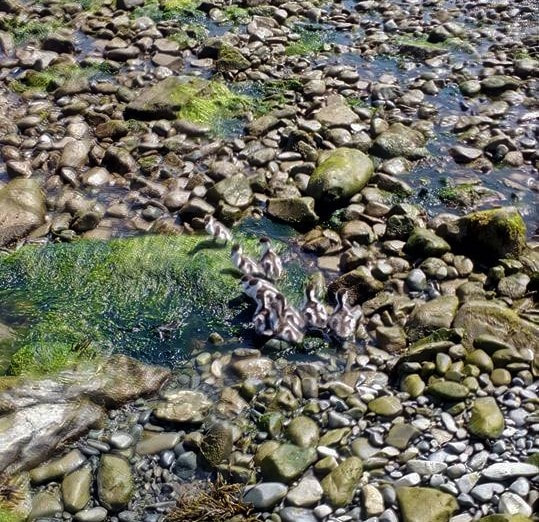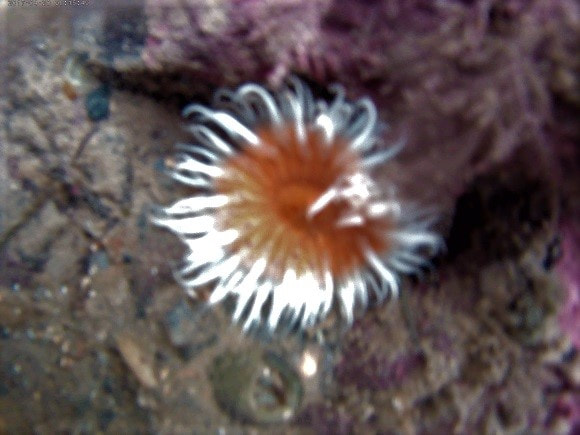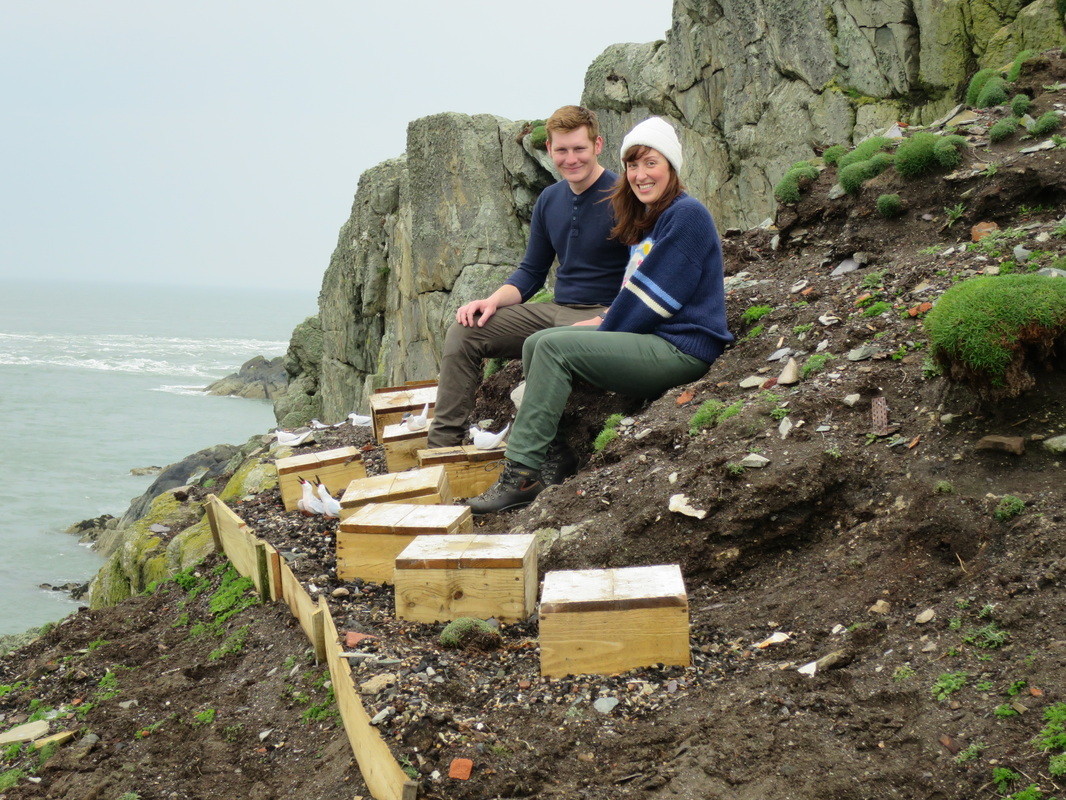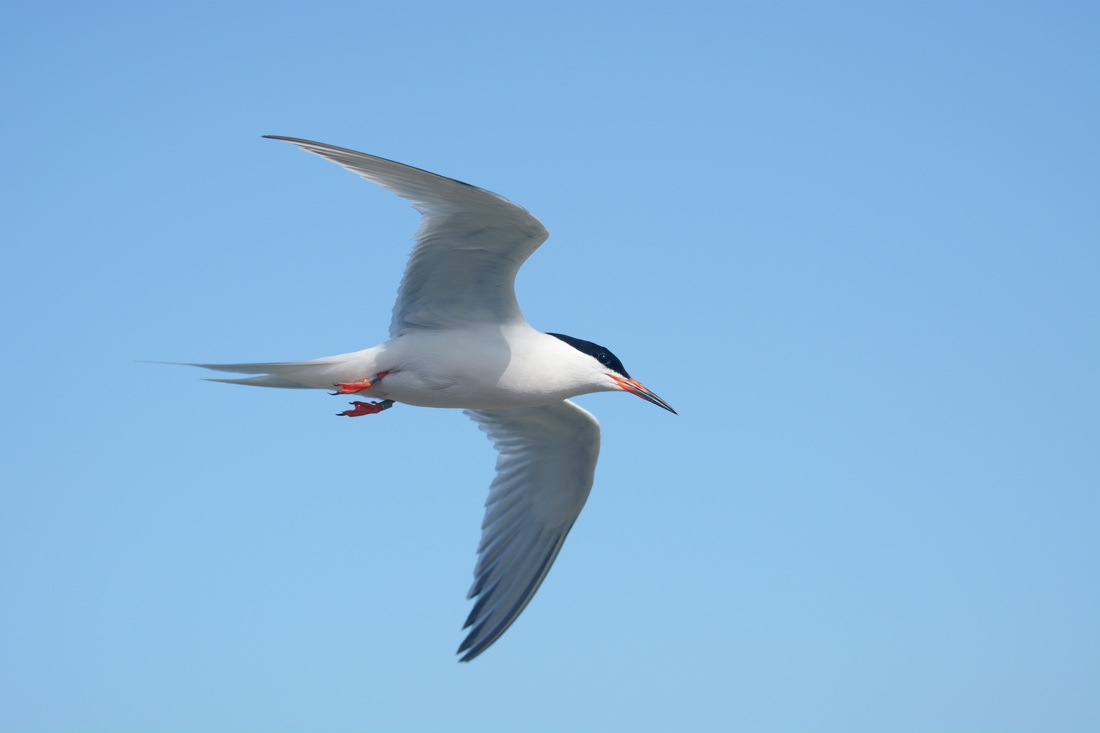|
Guest blog: My name is Rhiannon Baker and I am currently one of the 2018 Tern Warden’s on the Skerries. It’s my first year on the Skerries and WHAT a tern season it’s been!!! The terns first appeared on the Skerries on the 1st week of May; the first arrival of the Arctic terns on the 4th May and common terns on the 5th May. The first tern eggs of the season were found on 22nd May. The first chicks were seen hatching on the 12th June First fledgling was seen on the 6th July And having roseates with chicks this year is amazing! Since arriving at the end April this year myself and Ben (the other Skerries Warden) have been carrying out various tasks throughout the season. At the beginning putting out nest boxes, making and placing out roseate decoys and carrying out gull clutch counts and puffin burrow counts. During the season we’ve been carrying out tern clutch counts, chick feeding surveys and fledgling counts (for both terns and gull species) and deterring gulls from predating tern eggs, chicks and fledglings. Other highlights have included unusual visitors to the Skerries such as chough, eider ducks and a hummingbird hawk-moth. Also, the rescue of the shelduck ducklings from the tern colony. Fulmars and kittiwakes have been regular visitors The roseate terns have been at the Skerries this season and have 2 chicks now very close to fledging; which is very exciting; as if they fledge successfully, it’ll be the first time in over a decade for the Skerries. In addition to our daily tasks we have both been vlogging and blogging: - Ben who has been doing weekly videos = Birdman Ben:- https://youtu.be/jn7loF0iigY - Myself with daily blogs available at https://t.co/IpnR7BRo7P I have also been moth trapping (depending on weather conditions) and carrying out intertidal surveys in 5 bays on the Skerries. Also carried out many beach cleans; removing any plastic or balloons that washed up on the Skerries. The 2018 Tern season on the Skerries is not far from drawing to its conclusion now; with some of the common and Arctic tern fledglings leaving the Skerries to start their long migrations. Our peak tern fledglings count this season was 1,105 (potentially a lot more fledglings; this is the minimum total counted at one time). None on this would have been done without the fantastic support of Trinity Lighthouse Trust, The RSPB and the Roseate Tern Life Project, so a massive thank you to all for the support given to make it this all possible.
0 Comments
For the first time in a decade, the rarest tern species in Wales and the UK, a pair of roseate terns attempted to breed on the Skerries!  The Skerries (c) Chris Gomersall (rspb-images.com) The Skerries (c) Chris Gomersall (rspb-images.com) The Skerries are a group of small rocky islets which lie just off the northwest corner of Anglesey, Wales. Due to its sparse vegetation and rough terrain, it is inhospitable to humans; however the islands are an important sanctuary for breeding seabirds. The Skerries are particularly significant for breeding terns, supporting the largest Arctic tern colony in the UK with 3816 pairs along with 290 pairs of common terns in 2016. During the summer it is also home to breeding puffins, herring gulls, lesser and great black-backed gulls. However, the Isle of Anglesey also supported another species of tern known as the rarest breeding seabird in the UK. There were only 106 breeding pairs in 2016. Roseate terns (Sterna dougallii) with their incredibly pale plumage with slight rosy flush and long tail streamers are considered the most elegant of the five British breeding terns. These endangered birds migrate each spring from the western Africa to breed at only a handful of colonies in the UK and Ireland. The RSPB have been working to protect the seabirds on the Skerries for many years and last year saw the launch of the ambitious EU-funded Roseate Tern LIFE Recovery Project which brings together conservationists from the RSPB, BirdWatch Ireland and North Wales Wildlife Trust to address issues affecting breeding success on the three main breeding colonies. The project is also focused on preparing and restoring several sites within the former range of the population across Scotland, England, Wales, Republic of Ireland and Northern Ireland in the hopes of re-establishing thriving colonies of the roseate tern.  Roseate tern decoys and nest boxes (c) Ian Sims Roseate tern decoys and nest boxes (c) Ian Sims As a result, the additional funding towards the Skerries tern colony provided a two week extension on the wardening season, along with newly designed nest boxes being placed strategically around the islands. The wardens also placed lures playing roseate tern calls and hand-made decoys with the aim of attracting passing roseate terns to the colony. The continued management of this site for these seabirds is done by two RSPB wardens who live on the island from May to August. Their accommodation is in the old keepers’ quarters in the lighthouse, and now boasts running water, electricity & hot shower thanks to improvements provided by Trinity House. The presence of the wardens has been a vital ingredient in the success of the colony over the years and by deterring predators, reducing human disturbance, providing nestboxes, managing vegetation (and monitoring all of it along the way!) they can greatly improve the chances of chicks surviving. The Skerries is a prime location as just across the Irish Sea is Rockabill, which hosts the largest colony of roseate terns in North West Europe with 1556 pairs. Nevertheless, the last time that a pure pair of roseate terns bred on the Skerries was in 2006. Whilst individual roseate terns have bred with common terns as hybrid pairs quite regularly in recent years, the wardens were delighted to find a pure pair of ‘rosies’ nesting in 2016, boosting hopes for the future of a roseate tern colony in Wales.
With the terns currently winging their way back from Africa, we await with eager breath to what the summer of 2017 will bring! |
More Blogs to Read
AuthorThis blog is maintained by various people from the project team. Archives
August 2020
Categories
All
|
Roseate Tern LIFE Project is supported by the LIFE Programme of the European Union
LIFE14 NAT/UK/000394 ROSEATE TERN
LIFE14 NAT/UK/000394 ROSEATE TERN























 RSS Feed
RSS Feed